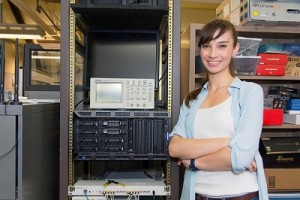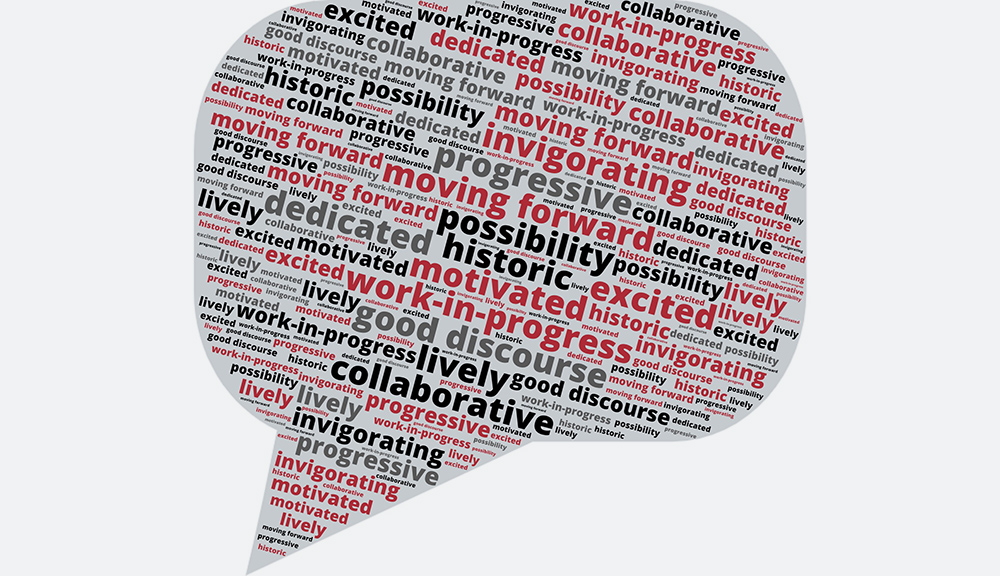
Prof. Alex Wyglinski
Professor Alex Wyglinski and his group of seven electrical engineering PhD candidates had been concentrating on the concept of “cognitive radio,” a term coined in 2000 to describe a system where the radio itself would make decisions entirely independent of human interaction in order to maximize performance. A smart phone is adaptive in that it will search for the best way to work within the limits of its mechanical configuration, or within a standard sometimes set by the FCC.
Presently, car radios and cell phones automatically search for the best towers to send and receive the strongest signals unbeknownst to the user. Impediments to that operation include tunnels, physical distance, and excessive traffic on the wireless bandwidth bandwagon. There are only so many slots on the information superhighway, and at times that traffic reaches the capacity allotted by the FCC. If each wireless channel or bandwidth slice is looked at as a resource, then one could say that these devices are also constantly looking for ways to optimize their available resources.
In contrast, a cognitive system would completely reconfigure its own resources, going as far as to break its own rules in order to maximize performance. And it would learn from its own mistakes or successes.
Reading a published article citing the similar adaptive capabilities that bumblebees possess led Wyglinski to make a beeline for botanist Robert Gegear, assistant professor of biology and biotechnology, to talk about his work.
Why Bumblebees?
Gegear and his team of biology students have been studying the secret lives of bees for many years. Through centuries of evolving environments, bumblebees have learned to collect data, adapt, and make informed decisions. Ants and honeybees have similar challenges when gathering food and distributing it to the masses. But the difference is that each of those two species has individual members who are charged with specific job responsibilities. And they are driven by outside influences like habits and hormones. Bumblebees are independent operators that interface with each other to determine solutions to issues.
In a sealed room filled with plastic flowers, Gegear’s students challenge the bumble bees to find planted nectar in different scenarios. Are they able to recognize that there is more nectar in the blue flowers? Will they find the nectar in the flowers on the left hand side of the room? How long will it take for them to scour the entire room? The flights of the bumblebees are studied and recorded, and their decision-making abilities while foraging for food are then defined, and then modeled. Their bee-havior is finally developed into mathematical formulae.
Hive mentality
According to Wyglinski, the barriers to interdisciplinary work at WPI are much lower than at other institutions of higher learning. He admits that there was an initial language barrier between the botanists and the electrical engineers. But not unlike the bees, the team has learned to adapt and optimize their combined resources. The Bee Team was encouraged by the academic environment of WPI to connect and work together on this unusual project rather than pollen in two different directions. As Wyglinski says, “At the end of the day, everyone wins.”

Bengi Aygun, PhD student
And like honey to the bee, their work has already paid off with a recent coveted $300,000 research grant from the National Science Foundation. There has been additional buzz from both the military and the auto industry.
Bumblebees have survived forever by bee-ing able to make decisions quickly, and by working without emotion. If one flower is crowded with other bees, they automatically make the decision to look for another.
The auto industry has been taking human choice out of the driving equation for many years. For example, emotional response and the potential for equipment failure were reduced when manual transmissions began to be phased out and the automatic transmission was introduced. Then, when maximizing gas mileage became a priority, automatic transmissions were designed to shift gears at internally calculated points based on leaner operation rather than providing the fastest performance.
It is now possible for some safety instrumentation to be automated and mathematically optimized. The auto industry has determined that human response is sometimes not practical, nor fast enough to be effective in real situations in real time. Many of the cars built since 2008 have added standard safety features like dashboard screens for rear viewing, alarms for sudden distance or speed differentials, lane changing alarms, automatic low level headlight switches, and even low tire pressure sensors. These are all in addition to systems like airbags and anti-lock brakes, which have been used for decades. Many of these changes have been federally mandated, but “safety beyond the capacity to see” is an ongoing goal of the industry, says Wyglinski.
If this instantaneous decision-making capability can be applied to radio reception, then why not adapt the cognitive technology concept to the cars themselves? That next phase is part of the ongoing research at WPI. The difference between a smart car and one able to operate on its own in a swarm (called a “connected vehicle”) would have to use similar communications technology.
Wyglinski is enthusiastic about the future. “I never stop talking about my work!” He sees the bee-derived technology moving toward assisted driving, and a step towards eventual reliable autonomous networking in cars before too long. This vehicular networking is called “platooning,” and it hinges on the ability to share information, and to make instantaneous decisions.
Studying the insects who have refined quick communications and reactions may ultimately determine whether the car that can drive itself in traffic is to bee … or not to bee.
– BY BARRY HAMLETTE


